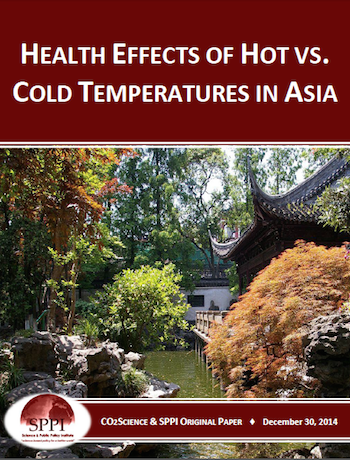News / Science & Technology
Health Effects of Hot Vs Cold Temperatures in Asia

Climate alarmists predict global warming will increase human death rates, and nary a heat wave occurs but what they are quick to blame any concurrent excess deaths on the high temperatures associated with it. Much more deadly than hot weather, however, is cold weather; yet climate alarmists typically ignore the excess deaths that are caused by low temperatures, even though they are far more numerous than those caused by high temperatures. In the present summary we examine a number of papers investigating the relationship between temperature and human health for various locations in Asia.
The relationship between temperature and human health has been studied by multiple researchers for Shanghai, China. Kan et al. (2003)1 , for example, investigated the association between temperature and daily mortality from 1 June 2000 to
31 Dec 2001, finding a V-like relationship between total mortality and temperature that had a minimum mortality risk at 26.7°C. Above this optimum temperature, they observed “total mortality increased by 0.73% for each degree Celsius increase; while for temperatures below the optimum value, total mortality decreased by 1.21% for each degree Celsius increase.” The net effect of a warming in Shanghai, China, therefore, would likely be reduced mortality on the order of 0.5% per degree Celsius increase in temperature, or perhaps even more, in light of the fact that the warming of the past few decades has been primarily due to increases in daily minimum temperatures, with much smaller increases at the high end of the temperature spectrum. Hence, it can be appreciated that the recovery of the Earth from the global chill of the Little Ice Age has had a positive effect on the health of the people of Shanghai that continues to this day, and it should continue into the foreseeable future if the planet continues to warm.
Read More
